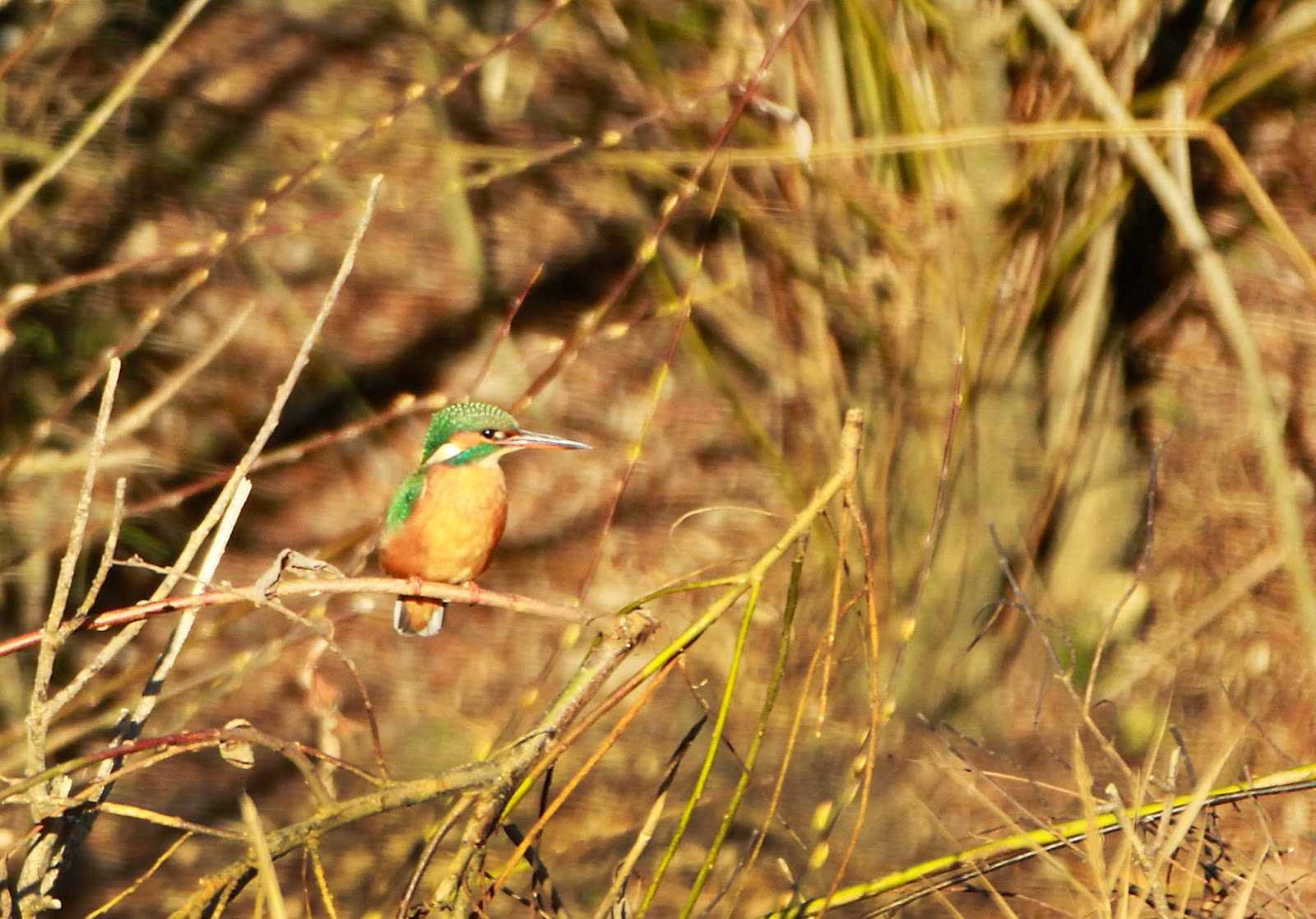We are now well into
the New Year but it is by no means too late for resolutions.
Waterford has an immense variety of and richness in its wildlife so
make a decision now to get out and enjoy and experience some of these
opportunities during the current calendar year.
So what can we expect?
Birds
 |
| Cattle Egret by Richard Zamora |
Opportunities abound to
see birdlife in the county and the following are some suggestions:
 |
| Spoonbill by Fran O'Connell |
Dungarvan still hosts the overwintering spoonbill. Check out Ballyneety for the spectacular male goldeneye and accompanying dowdier females. Over the past several weeks two cattle egrets have taken up residence in the Bunmahon/Seafield area - southern Europe or Africa would be their more usual winter home. The boating lake at Tramore is presently affording close-up views of shovelor, gadwall, tufted duck and snipe along with numerous gulls and other wildfowl.
 |
| Ring-necked Duck & Tufted Ducks by Bernie Sheridan |
A careful search through the gulls should yield the North American ring-billed gull and an Artic glaucous gull. A male ring-necked duck is currently wintering at Ballyshunnock reservoir.
 |
| Kingfisher by Richard Zamora |
A check out of the bridges crossing the rivers at Ballyvoile, Stradbally, Bunmahon and Annestown (among other rivers) should yield a dipper and perhaps a colourful kingfisher.
During spring/early
summer a visit to the foothills of the Comeraghs or The Vee should
produce a cuckoo. The distinctive call is obvious and with patience
it should be possible to observe the bird itself.
In late April whimbrel
migrate through Waterford on their way north to their breeding
grounds. In some years literally thousands of these birds linger on
the beach at Clonea as they feed up before resuming their journey
northwards.
 |
| Whimbrel by Andrew Malcolm |
Spring also offers the
opportunity to experience the famous Dawn Chorus. At dawn numerous
different species of bird sing loudly to proclaim their territories
and re-establish contact with each other. Organised outings take
place in Waterford and although it means an extremely early start it
is well worth the effort.
 |
| Dipper by Fran O'Connell |
In July/August watch
from headlands such as Helvick and Brownstown during storms for
seabirds pushed close to land by strong winds. Numbers passing can be
spectacular and include shearwaters, skuas, auks, terns and other
species.
With the warmer weather
in spring insects make their appearance. Watch out in March and
April for the spectacular male orange tip butterfly. A visit
to Coumaraglinmountain in May/June should provide an opportunity to
observe the green hairstreak butterfly. Its much rarer relative the
purple hairstreak can be seen fluttering around the tops of oak trees
in August/September. Colligan and Ballyrafter are good sites for this
butterfly. The ideal habitat is the canopy of oaks overhanging
streams. A visit to Mount Congreve may be rewarded with a comma – a
recent Waterford coloniser.
The area between
Annestown and Dunhill castle is excellent for emperor dragonfly and
brown hawker in summer. Watch these large insects as they hunt and
defend territories, resembling miniature helicopters as they fly to
and fro.
 |
| Fox by Andrew Malcolm |
Everybody admires red
squirrels and they are widespread in Waterford. The Towers at Lismore
and Colligan Woods are good areas for the species. Pine martens are
rarer and much more elusive but are present in the Kilrossanty and
Portlaw areas. Watch the fields throughout the county at any time
for foxes hunting.
 |
| Common Dolphin by Andrew Malcolm |
Bats are also
widespread in Waterford. Watch any waterways at dusk in the county
during spring/summer for the daubenton’s bat. Street lights attract
leisler’s bats at night where they can be observed feeding. |
| Minke Whale by Andrew Malcolm |
 |
| Harbour Seals by Bernie Sheridan |
The Waterford coast is
fast gaining a reputation as one of the foremost places in Europe for
observing marine mammals. Fin whales (the second largest animal to
ever exist on the planet), minke whales, humpback whales,
bottle-nosed and risso’s dolphins are easily observable in season.
Ram Head at Ardmore, Helvick Head and Tankardstown at Bunmahon are
excellent vantage points. Dungarvan Harbour holds small numbers of
both grey and harbour/common seals.
Check out
www.waterfordbirds.com for local wildlife updates and submission of
records. If you have any questions or comments please email them to
japwatntr@gmail.com.

No comments:
Post a Comment